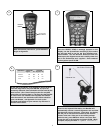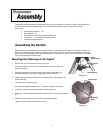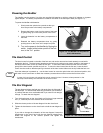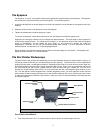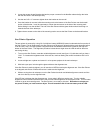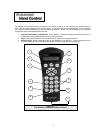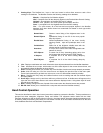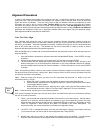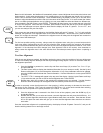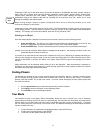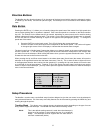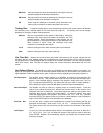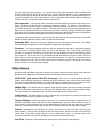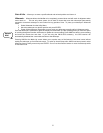
16
Based on this information, the NexStar will automatically select a second bright star that is above the horizon and
slew towards it. At this point the telescope is only roughly aligned, so the alignment star should only be near the
field of view of the Star Pointer finderscope. Once finished slewing, the display will ask you to use the arrow
buttons to align the selected star with the red dot in the center of the Star Pointer. If for some reason the chosen
star is not visible (perhaps behind a tree or building) you can press UNDO to select and slew to a different star.
Once centered in the Star Pointer, press ENTER. The display will then instruct you to center the star in the field
of view of the eyepiece. When the star is centered, press ALIGN to accept this star as your second alignment
star. When the telescope has been aligned to both stars the display will read Alignment Successful, and
you are now ready to find your first object.
If the wrong star was centered and aligned to, the NexStar display will read Alignment Failed and scroll the
message, "the positions of the alignment stars did not match the database". Should this occur, press the UNDO
button and re-align the telescope. Remember the alignment star will always be the brightest star nearest the
field of view of the finderscope.
For the best possible pointing accuracy, always center the alignment stars using the up arrow button and the
right arrow button. Approaching the star from this direction when looking through the eyepiece will eliminate
much of the backlash between the gears and assure the most accurate alignment possible. However, if the “Goto
Approach” of the telescope has been changed (see ”Goto Approach” later in this section), then remember to
always center the alignment stars in the same direction that the telescope centers objects when completing a
slew.
Two Star Alignment
With the two-star alignment method, the NexStar requires the user to know the positions of only two bright stars
in order to accurately align the telescope with the sky and begin finding objects. Here is an overview of the two-
star alignment procedure:
1. Once the NexStar is powered on, use the Up and Down scroll keys (10) to select Two-Star Align,
and press ENTER.
2. The hand control will then display the date/time information for you to accept or modify. Use the Up and
Down scroll buttons (10) to scroll through the information. If any of the parameters need to be updated,
press the UNDO button and enter the current information. If all the information is correct, press ENTER
to accept.
3. The SELECT STAR 1 message will appear in the top row of the display. Use the Up and Down scroll keys
(10) to select the star you wish to use for the first alignment star. Press ENTER.
4. NexStar then asks you to center in the eyepiece the alignment star you selected. Use the direction
buttons to slew the telescope to the alignment star and carefully center the star in the eyepiece.
In order to accurately center the alignment star in the eyepiece, it will be necessary to decrease the slew rate of
the motors for fine centering. This is done by pressing the RATE key (11) on the hand controller then selecting
the number that corresponds to the speed you desire. (9 = fastest , 1 = slowest).
5. Once the alignment star is centered in the field of view of the eyepiece, press the ALIGN key (2) to
accept this position.
6. NexStar will then ask you to select and center a second alignment star and press the ALIGN key. It is
best to choose alignment stars that are a good distance away from one another. Stars that are at least
40º to 60º apart from each other will give you a more accurate alignment than stars that are close to
each other.
Once the second star alignment is completed properly, the display will read Alignment Successful, and you will
hear the tracking motors turn-on and begin to track.
Helpful
Hint
Trouble
Shooting
Observing
T
T
i
i
p
p



